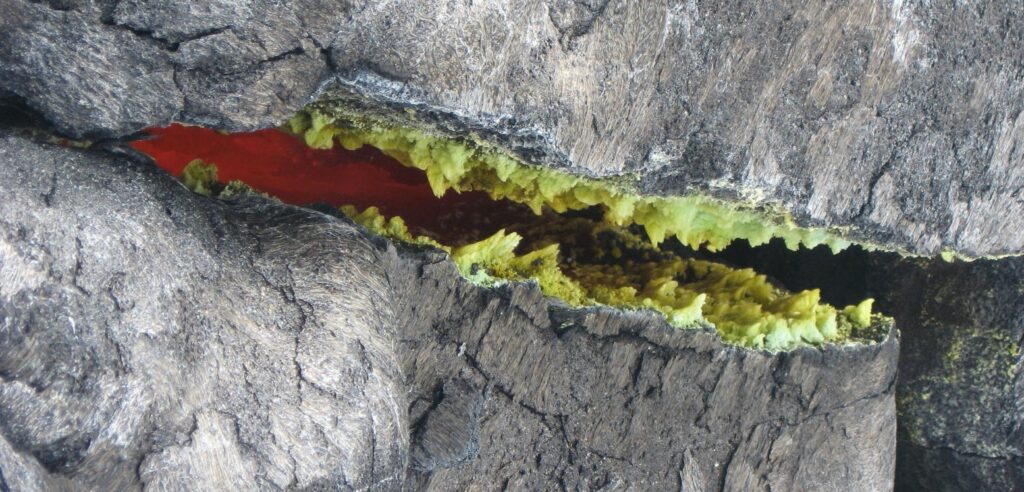2: Review of Physical Geology
- Page ID
- 25483
\( \newcommand{\vecs}[1]{\overset { \scriptstyle \rightharpoonup} {\mathbf{#1}} } \)
\( \newcommand{\vecd}[1]{\overset{-\!-\!\rightharpoonup}{\vphantom{a}\smash {#1}}} \)
\( \newcommand{\dsum}{\displaystyle\sum\limits} \)
\( \newcommand{\dint}{\displaystyle\int\limits} \)
\( \newcommand{\dlim}{\displaystyle\lim\limits} \)
\( \newcommand{\id}{\mathrm{id}}\) \( \newcommand{\Span}{\mathrm{span}}\)
( \newcommand{\kernel}{\mathrm{null}\,}\) \( \newcommand{\range}{\mathrm{range}\,}\)
\( \newcommand{\RealPart}{\mathrm{Re}}\) \( \newcommand{\ImaginaryPart}{\mathrm{Im}}\)
\( \newcommand{\Argument}{\mathrm{Arg}}\) \( \newcommand{\norm}[1]{\| #1 \|}\)
\( \newcommand{\inner}[2]{\langle #1, #2 \rangle}\)
\( \newcommand{\Span}{\mathrm{span}}\)
\( \newcommand{\id}{\mathrm{id}}\)
\( \newcommand{\Span}{\mathrm{span}}\)
\( \newcommand{\kernel}{\mathrm{null}\,}\)
\( \newcommand{\range}{\mathrm{range}\,}\)
\( \newcommand{\RealPart}{\mathrm{Re}}\)
\( \newcommand{\ImaginaryPart}{\mathrm{Im}}\)
\( \newcommand{\Argument}{\mathrm{Arg}}\)
\( \newcommand{\norm}[1]{\| #1 \|}\)
\( \newcommand{\inner}[2]{\langle #1, #2 \rangle}\)
\( \newcommand{\Span}{\mathrm{span}}\) \( \newcommand{\AA}{\unicode[.8,0]{x212B}}\)
\( \newcommand{\vectorA}[1]{\vec{#1}} % arrow\)
\( \newcommand{\vectorAt}[1]{\vec{\text{#1}}} % arrow\)
\( \newcommand{\vectorB}[1]{\overset { \scriptstyle \rightharpoonup} {\mathbf{#1}} } \)
\( \newcommand{\vectorC}[1]{\textbf{#1}} \)
\( \newcommand{\vectorD}[1]{\overrightarrow{#1}} \)
\( \newcommand{\vectorDt}[1]{\overrightarrow{\text{#1}}} \)
\( \newcommand{\vectE}[1]{\overset{-\!-\!\rightharpoonup}{\vphantom{a}\smash{\mathbf {#1}}}} \)
\( \newcommand{\vecs}[1]{\overset { \scriptstyle \rightharpoonup} {\mathbf{#1}} } \)
\( \newcommand{\vecd}[1]{\overset{-\!-\!\rightharpoonup}{\vphantom{a}\smash {#1}}} \)
\(\newcommand{\avec}{\mathbf a}\) \(\newcommand{\bvec}{\mathbf b}\) \(\newcommand{\cvec}{\mathbf c}\) \(\newcommand{\dvec}{\mathbf d}\) \(\newcommand{\dtil}{\widetilde{\mathbf d}}\) \(\newcommand{\evec}{\mathbf e}\) \(\newcommand{\fvec}{\mathbf f}\) \(\newcommand{\nvec}{\mathbf n}\) \(\newcommand{\pvec}{\mathbf p}\) \(\newcommand{\qvec}{\mathbf q}\) \(\newcommand{\svec}{\mathbf s}\) \(\newcommand{\tvec}{\mathbf t}\) \(\newcommand{\uvec}{\mathbf u}\) \(\newcommand{\vvec}{\mathbf v}\) \(\newcommand{\wvec}{\mathbf w}\) \(\newcommand{\xvec}{\mathbf x}\) \(\newcommand{\yvec}{\mathbf y}\) \(\newcommand{\zvec}{\mathbf z}\) \(\newcommand{\rvec}{\mathbf r}\) \(\newcommand{\mvec}{\mathbf m}\) \(\newcommand{\zerovec}{\mathbf 0}\) \(\newcommand{\onevec}{\mathbf 1}\) \(\newcommand{\real}{\mathbb R}\) \(\newcommand{\twovec}[2]{\left[\begin{array}{r}#1 \\ #2 \end{array}\right]}\) \(\newcommand{\ctwovec}[2]{\left[\begin{array}{c}#1 \\ #2 \end{array}\right]}\) \(\newcommand{\threevec}[3]{\left[\begin{array}{r}#1 \\ #2 \\ #3 \end{array}\right]}\) \(\newcommand{\cthreevec}[3]{\left[\begin{array}{c}#1 \\ #2 \\ #3 \end{array}\right]}\) \(\newcommand{\fourvec}[4]{\left[\begin{array}{r}#1 \\ #2 \\ #3 \\ #4 \end{array}\right]}\) \(\newcommand{\cfourvec}[4]{\left[\begin{array}{c}#1 \\ #2 \\ #3 \\ #4 \end{array}\right]}\) \(\newcommand{\fivevec}[5]{\left[\begin{array}{r}#1 \\ #2 \\ #3 \\ #4 \\ #5 \\ \end{array}\right]}\) \(\newcommand{\cfivevec}[5]{\left[\begin{array}{c}#1 \\ #2 \\ #3 \\ #4 \\ #5 \\ \end{array}\right]}\) \(\newcommand{\mattwo}[4]{\left[\begin{array}{rr}#1 \amp #2 \\ #3 \amp #4 \\ \end{array}\right]}\) \(\newcommand{\laspan}[1]{\text{Span}\{#1\}}\) \(\newcommand{\bcal}{\cal B}\) \(\newcommand{\ccal}{\cal C}\) \(\newcommand{\scal}{\cal S}\) \(\newcommand{\wcal}{\cal W}\) \(\newcommand{\ecal}{\cal E}\) \(\newcommand{\coords}[2]{\left\{#1\right\}_{#2}}\) \(\newcommand{\gray}[1]{\color{gray}{#1}}\) \(\newcommand{\lgray}[1]{\color{lightgray}{#1}}\) \(\newcommand{\rank}{\operatorname{rank}}\) \(\newcommand{\row}{\text{Row}}\) \(\newcommand{\col}{\text{Col}}\) \(\renewcommand{\row}{\text{Row}}\) \(\newcommand{\nul}{\text{Nul}}\) \(\newcommand{\var}{\text{Var}}\) \(\newcommand{\corr}{\text{corr}}\) \(\newcommand{\len}[1]{\left|#1\right|}\) \(\newcommand{\bbar}{\overline{\bvec}}\) \(\newcommand{\bhat}{\widehat{\bvec}}\) \(\newcommand{\bperp}{\bvec^\perp}\) \(\newcommand{\xhat}{\widehat{\xvec}}\) \(\newcommand{\vhat}{\widehat{\vvec}}\) \(\newcommand{\uhat}{\widehat{\uvec}}\) \(\newcommand{\what}{\widehat{\wvec}}\) \(\newcommand{\Sighat}{\widehat{\Sigma}}\) \(\newcommand{\lt}{<}\) \(\newcommand{\gt}{>}\) \(\newcommand{\amp}{&}\) \(\definecolor{fillinmathshade}{gray}{0.9}\)After having carefully read this chapter and completed the exercises within it and the questions at the end, you should be able to:
- Describe the nature of atoms and their composition of protons, neutrons and electrons,
- Describe the two main types of bonding within minerals,
- Explain the basis for defining mineral groups and the different types of silicate minerals,
- Describe the general properties of igneous, sedimentary and metamorphic rocks and how they are formed,
- Describe the composition and structure of the Earth’s interior,
- Explain the mechanisms of plate tectonics, and describe some of the processes that take place at convergent, divergent and transform plate boundaries, and
- Describe some of the Earth systems that strictly involve the geosphere.
- 2.1: Minerals
- This page covers the fundamentals of atoms, minerals, and silicate structures. Atoms, consisting of protons, neutrons, and electrons, bond to achieve stability. Minerals, categorized by their dominant anions, have specific compositions and structures. Silicate minerals, primarily made of silica tetrahedra, are vital in geology and Earth's crust. The text details various silicate minerals, including amphibole and mica, and their geometric arrangements for stability and cleavage.
- 2.2: Rocks
- This page discusses metamorphic rocks, particularly non-foliated types like quartzite and marble, which form from sandstone and limestone via heat and pressure. It highlights the rock cycle's role in the transformation of igneous, sedimentary, and metamorphic rocks and emphasizes the importance of understanding these processes in geology. An exercise is included that focuses on identifying different rock types and the geological processes behind their formation.
- 2.3: Earth’s Interior
- This page describes the Earth's structure, highlighting its concentric layers: the thin crust (5-40 km), the mantle with its rigid lithosphere and convective asthenosphere, and the iron-nickel core, which includes a liquid outer layer and a solid inner core. Heat transfer in the outer core leads to convection and the generation of the Earth's magnetic field.
- 2.4: Plate Tectonics
- This page describes the lithosphere, composed of tectonic plates that move and interact at their boundaries, causing geological events. It identifies the seven major plates and categorizes boundaries as convergent, divergent, or transform. These interactions can lead to earthquakes, volcanic activity, and the formation of new crust, influencing Earth's landscape.
- 2.5: Geosphere Earth Systems
- This page explores Earth system processes in the geosphere, focusing on divergent boundaries and subduction. At divergent boundaries, hot groundwater alters oceanic crust, forming minerals and fostering unique ecosystems around hydrothermal vents. Subduction influences the geosphere by pushing materials into the mantle, which can later resurface through convection and magmatism, providing insights into Earth's history.
- 2.6: Chapter 2 Summary and Questions for Review
- This page discusses geology, focusing on mineral bonding, rock types (igneous, sedimentary, metamorphic), and the Earth's interior. It covers the rock cycle, including magma formation and sedimentation, as well as plate tectonics and its effects on seismic and volcanic activity. The page also examines geosphere processes involving water and rocks at divergent boundaries and subduction zones. Review questions are provided to test comprehension of these topics.
This chapter is intended to provide a broad overview of some of the aspects of Physical Geology that are relevant to Environmental Geology. It is mostly a review of what you might have studied in a course on Physical Geology. If you haven’t taken a Physical Geology course, you will likely want to read more than what is provided here. One place to start would be with a Physical Geology textbook, like this one: Physical Geology (Earle). The main topics covered here are minerals and their properties, rocks and how they form, the Earth’s interior, and plate tectonics. The last section is on Earth systems that are of specific relevance to the geosphere, so even if you have recently completed a Physical Geology course, you might want to have a look at that part.
Figure \(\PageIndex{1}\) shows some of the aspects of rocks and minerals, and also alludes to Earth Systems that are relevant to geological process, which are covered at the end of this chapter.

Figure \(\PageIndex{1}\) Magma is Visible Within a Crack in Basaltic Rock on the Side of Kilauea, Hawaii. Sulphur dioxide emitted from the magma has formed crystals of native sulphur along the margins of the crack.
Media Attribution
- Figure 2.0.1 Steven Earle, CC BY 4.0


